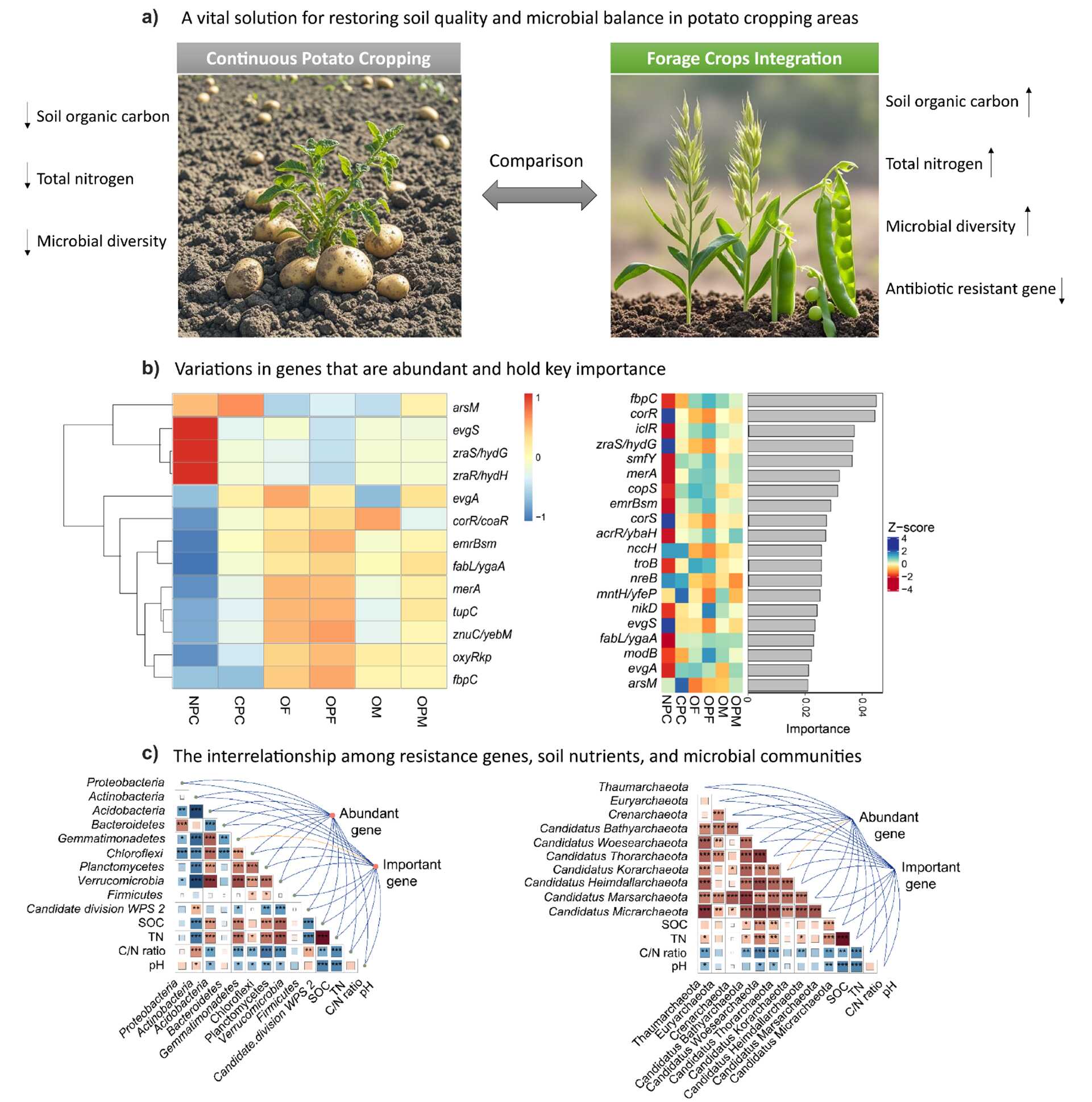As one of the globally cultivated and consumed staple food crops, potato plays a vital role in ensuring food security. However, intensive potato cultivation has resulted in a series of environmental challenges, including soil degradation, water resource depletion, and increased risks of microbial contamination.
These issues are further exacerbated in semi-arid regions, where water scarcity and fragile ecosystems amplify the environmental footprint of agricultural activities. Additionally, excessive reliance on chemical fertilizers and pesticides not only causes soil and water pollution but also poses threats to human health and biodiversity. Therefore, exploring sustainable agricultural practices to address these challenges has become particularly urgent.
Against this backdrop, the Specialized Research Group on Macrofungal Germplasm Resources and Green Development and the Specialized Research Group on Plant Evolution and Adaptation on the Qinghai-Tibet Plateau from Kunming Institute of Botany, Chinses Academy of Sciences (KIB/CAS) have initiated an in-depth interdisciplinary collaboration.
The joint research teams focus on the role of forage grass cultivation in semi-arid potato continuous cropping systems, conducting comprehensive investigations into its impacts on soil bacterial and archaeal communities, as well as hazard-related pathogenic factor genes and antibiotic resistance genes (ARGs) (Figure 1).
This study reveals Potato-forage rotation significantly altered soil physicochemical properties. Compared to non-potato cultivation, continuous potato cropping (CPC) led to a marked reduction in soil organic carbon (from 31.9 g kg⁻¹ to 15.7 g kg⁻¹) and total nitrogen (from 3.7 g kg⁻¹ to 1.6 g kg⁻¹), indicating substantial declines in soil fertility.
Among the ten identified phyla, Proteobacteria exhibited the highest relative abundance, increasing from 34.6% to 38.4%, followed by Actinobacteria (20–36%). These phyla play critical roles in maintaining soil health. Additionally, CPC generated more specific antibiotic resistance genes (ARGs) compared to non-potato cultivation (NPC), suggesting that CPC selects for resistance traits in the soil microbiome, which are closely associated with microbial community composition (Figure 1).
Forage crops (oats or oat-pea mixtures) exerted differential effects on ARGs across growth stages. Variations between the flowering and maturity stages of oats indicated that plant growth and root exudate composition influence microbial communities and ARG proliferation.
Mantel tests further revealed that specific soil properties affect microbial taxon abundances and determine the expression of key ARG-related functional genes. These findings highlight the complex interactions among microbial communities, genes, and soil health (Figure 1), providing critical guidance for developing agricultural practices to manage soil health and mitigate antibiotic resistance in continuous cropping systems.

Figure 1. Effects of Potato-forage Rotation on Key Nutrients, Microbial Communities, and Antibiotic Resistance Genes (ARGs) in Continuous Potato Cropping Soil (Image by KIB)
This study underscores the benefits of crop diversification—specifically through forage introduction—in preserving soil health and microbial diversity.
The results offer valuable insights for designing sustainable agricultural strategies that enhance soil fertility and promote ecosystem stability in semi-arid regions. Future research will investigate the long-term impacts of forage cultivation on soil microbial communities and ARGs, while developing optimized management practices to balance potato productivity with reducing environmental and health risks associated with continuous cropping.
The research was published as "Combatting environmental impacts and microbiological pollution risks in Potato cropping: benefits of forage cultivation in a semi-arid region" in Resources, Environment and Sustainability a top-tier journal in environmental science and ecology (Q1).
Funding was provided by the Strategic Priority Research Program of the Chinese Academy of Sciences (XDA26050301, XDA26050302), the Yunnan Province Talent Support Program for Young Scholars (YNQR-QNRC-2019-025), and the Yunnan Provincial Key Basic Research Project (202401BC070001).
Contact:
YANG Mei
General Office
Kunming Institute of Botany, CAS
email: yangmei@mail.kib.ac.cn
(Editor: Yang Mei)




